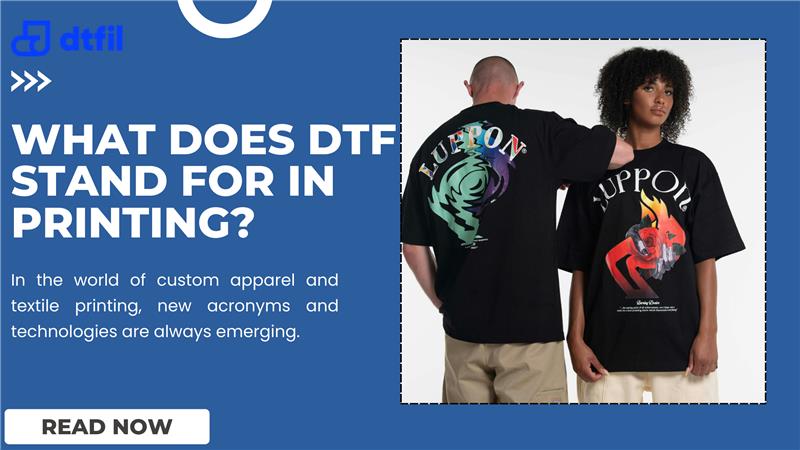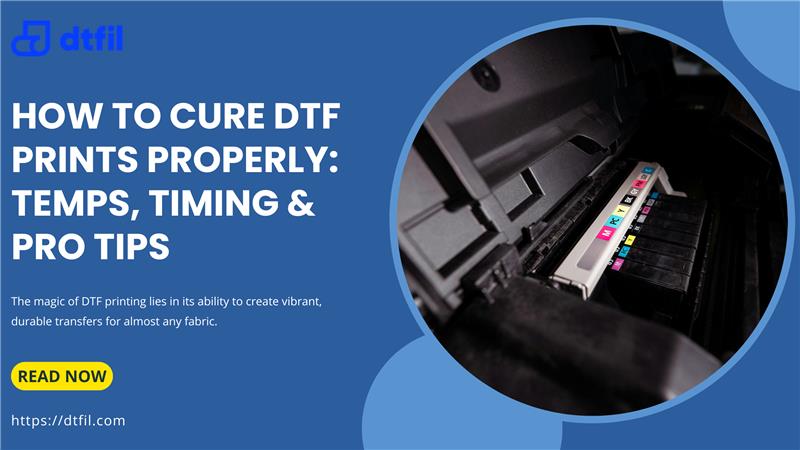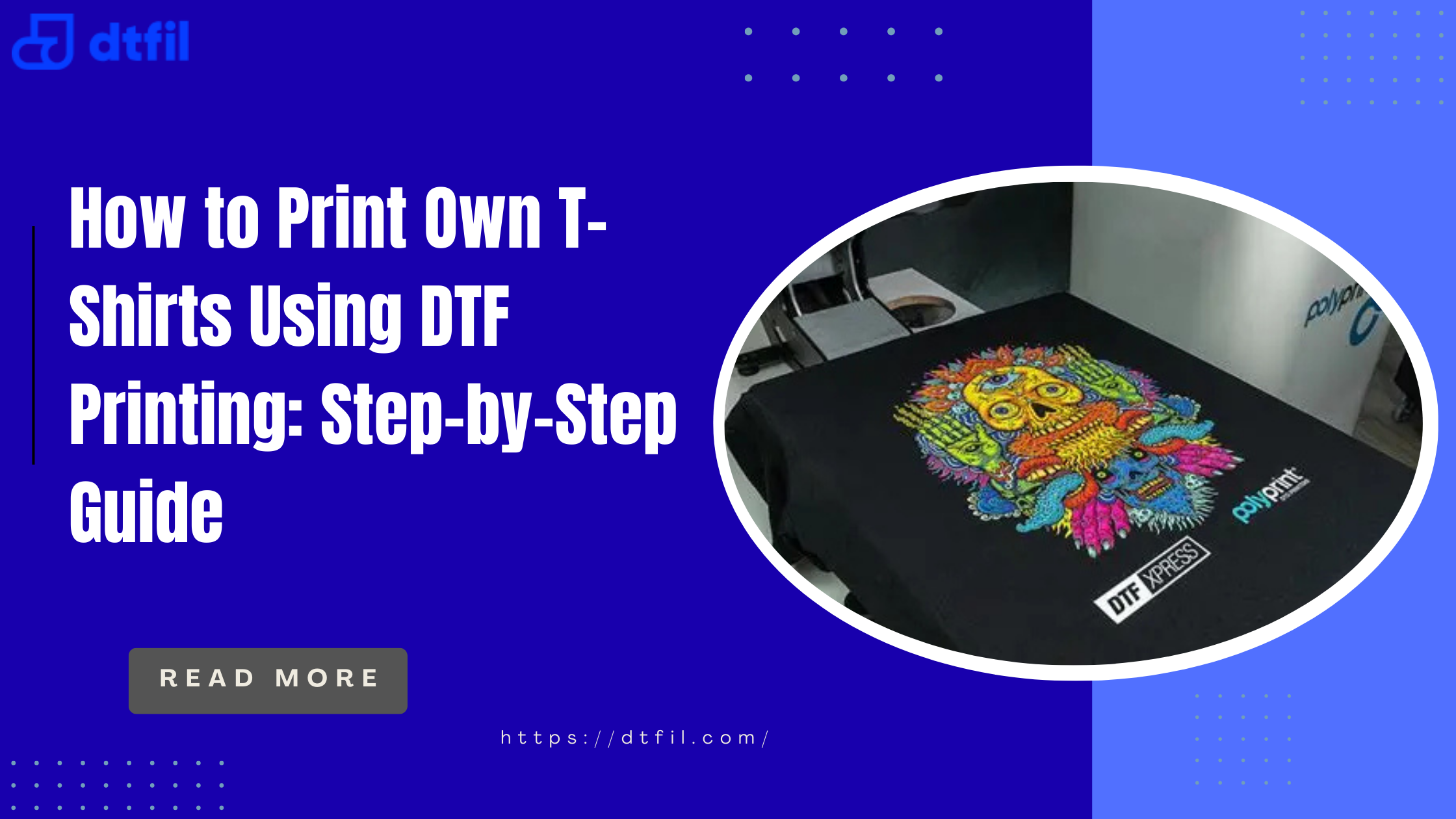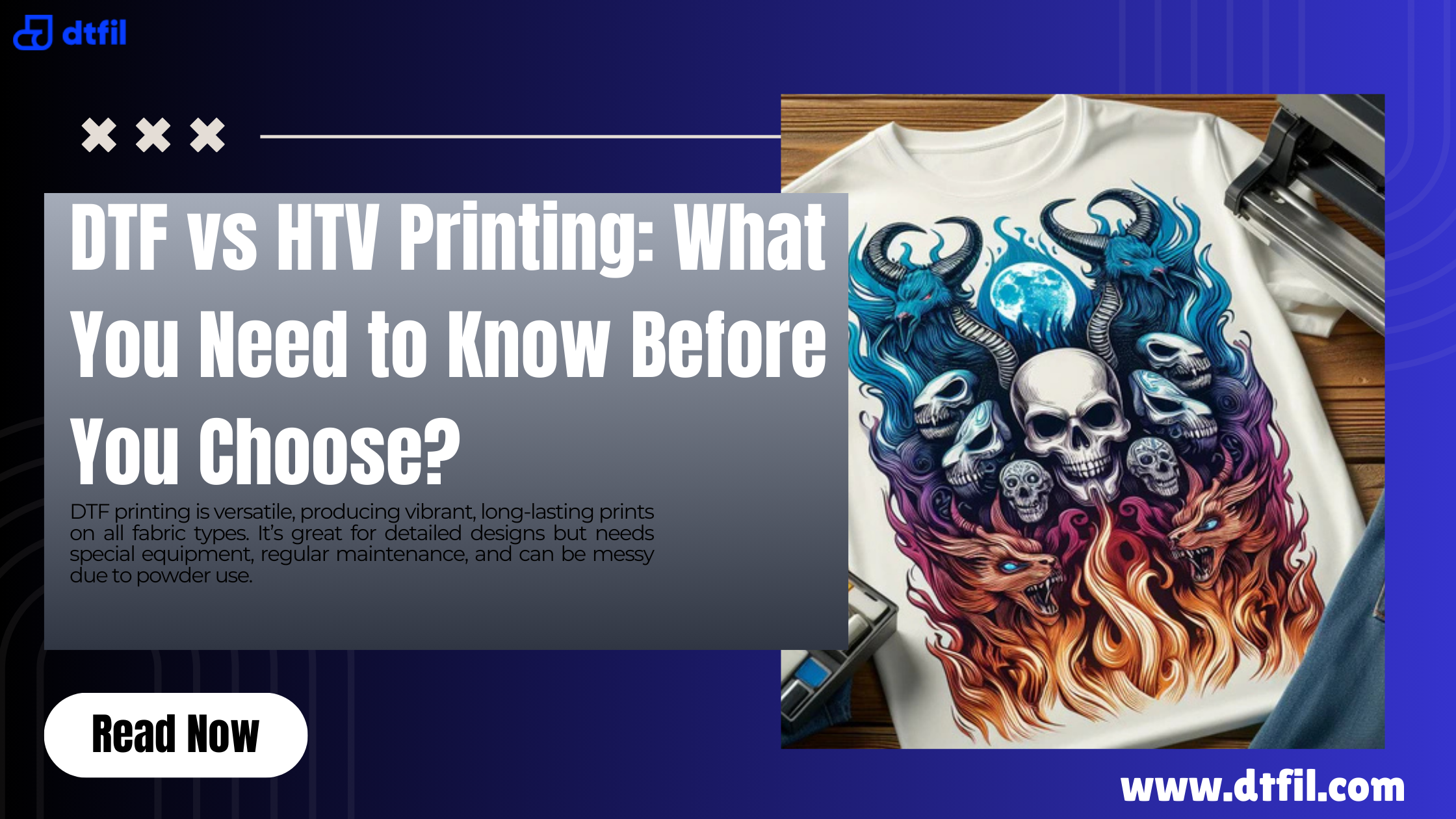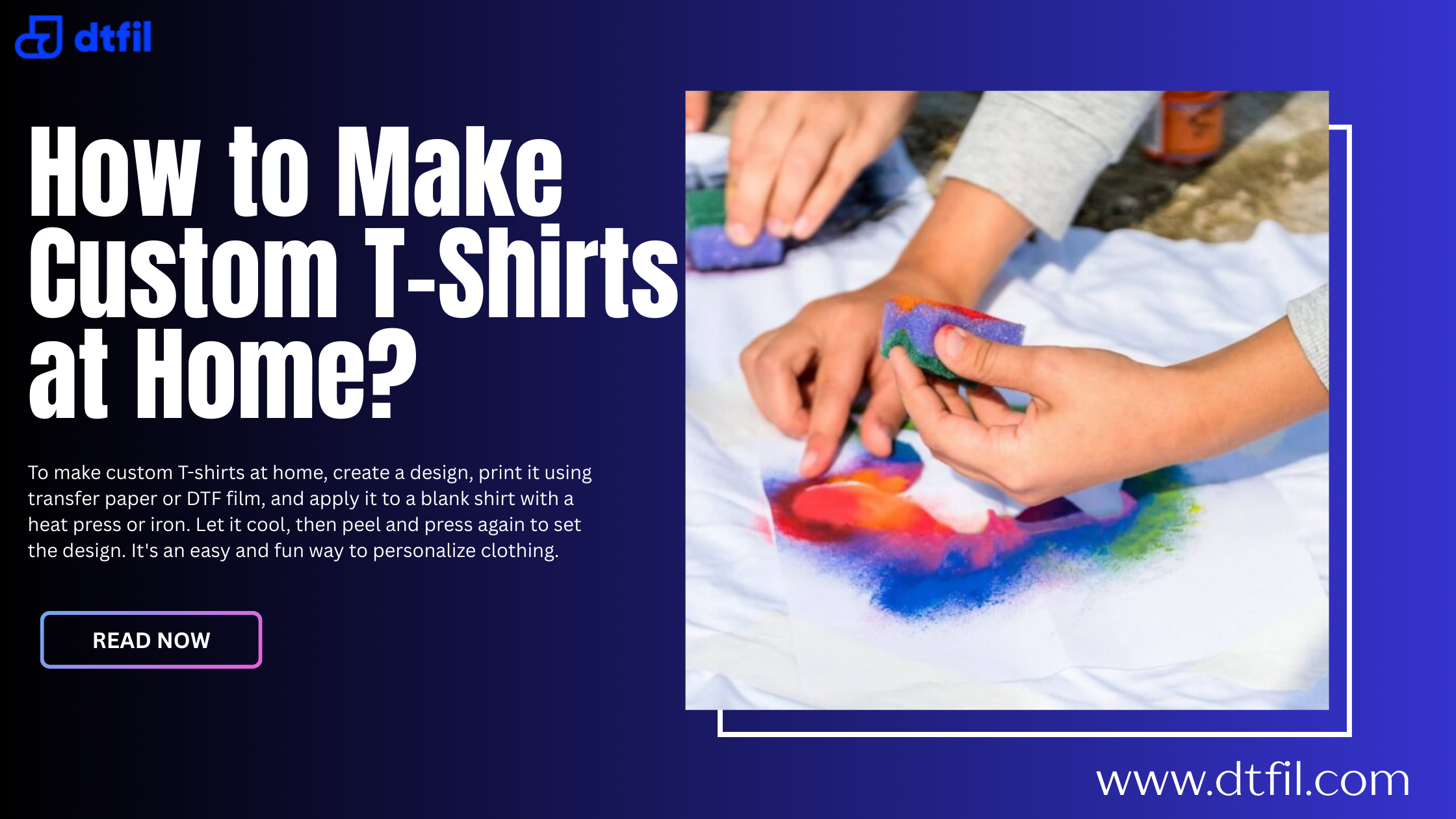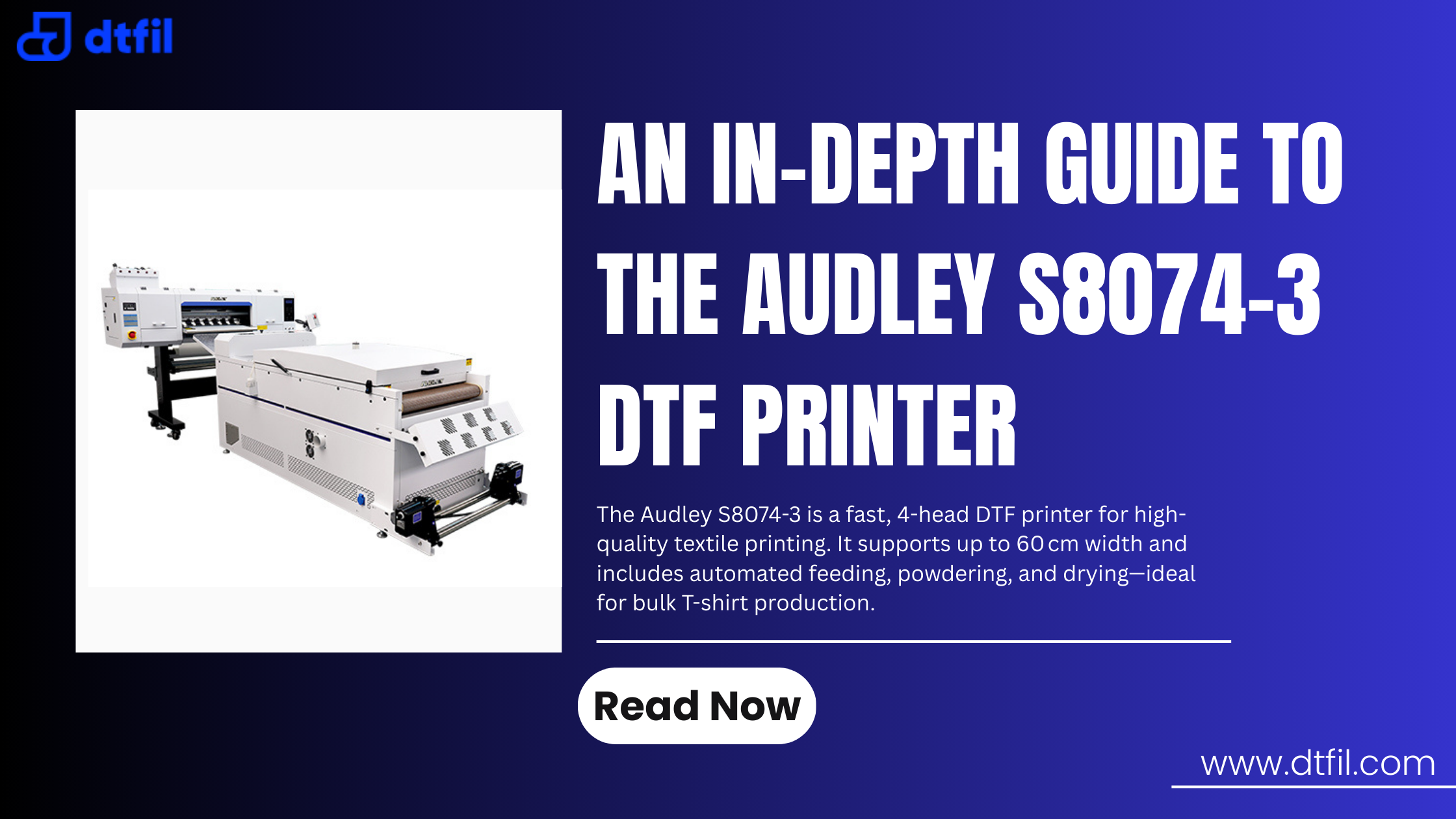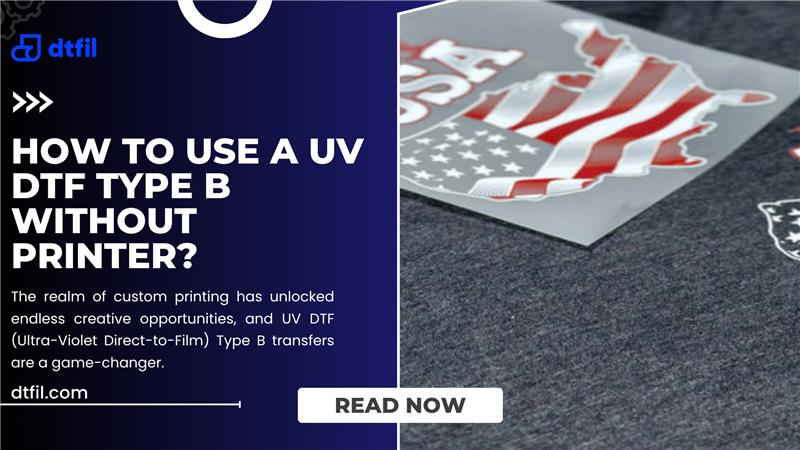The world of printing techniques undergoes constant dynamism, and new methods with constant promises of better results, faster production times, and more and more versatility keep coming up. One such innovation that has taken a great spotlight is DTF—Direct to Film. So what does DTF mean in printing, and how does it rise against the others? All these myths circulating about this technology will confuse a person who is new to the process.
This blog will explain what DTF printing is all about, bust common myths, and give you the facts you need to know to make an informed decision on whether or not it is right for your printing needs.
Understanding DTF Printing
DTF printing, or Direct to Film printing, is the newest method in the textile and apparel industries for vivid and high-quality prints to be transferred onto various fabrics. In contrast to traditional screen printing or Direct to Garment printing, DTF entails printing a design onto a special film, which is then coated with adhesive powder and heat-pressed onto the garment. This process is gaining popularity because one can print on cotton, polyester, blends, and even dark fabrics—something that is often quite a challenge for other printing methods.
One of the reasons DTF printing has become so popular among businesses and individuals to create high-quality, custom apparel is because it offers great versatility. Much like any other technology, it comes with its pros and cons, and understanding these is critical to making the right choice for your needs.
Debunking Myths About DTF Printing
As with any new tech, people tend to build up myths and misconceptions about DTF printing. We will find and debunk some of the most common ones, shedding light on the facts.

Also Read: DTF Transfer Printing vs Other Methods: DTG, Screen Printing, and Sublimation
Myth 1: DTF Printing is Only Suitable for Small-Scale Productions
One of the biggest myths believed to be true is that DTF printing is practical only for small runs of production or one-off custom orders. Though it's true and the DTF is really good in small runs, that doesn't mean it can't be scaled up. Any business will be able to produce reasonable amounts within a quicker turnaround using DTF, especially if one exploits the use of DTF gang sheets, which allows many designs to be printed on one film simultaneously. This, therefore, makes this scalable option very versatile, and suitable both for small and large businesses.
Myth 2: DTF Prints Don’t Last Long
One of the most common myths is that DTF prints don't last very long; they fade or peel off after a few washes. If applied correctly, the truth could not be further from this. DTF prints, when applied correctly, are very durable and will survive innumerable washes without ever losing their vibrancy or integrity. Exactly following proper application and washing instructions is where the secret lies to longevity, discussed a bit later in this blog.
Myth 3: DTF Printing is Complicated and Time-Consuming
Some believe that DTF printing is too complicated and takes too much time compared to other methods of printing, especially DTG or screen printing. This is not that hard once a person understands the basic process of printing, applying adhesive, and then heat press. All can be done in a nice workflow. Indeed, with practice, DTF printing is just like all the others; it's as quick, if not even quicker, in some respect.
Also Read: Direct-to-Film (DTF) Printing - What are the Pros and Cons?
Myth 4: DTF Printing is Expensive
Another misconception is that DTF printing is very expensive. The initial setup cost may be a little higher due to the DTF printer, heat press, and other supplies, but in bulk production, it can turn out to be cheap per print. It also prints on a wide range of fabrics and materials, which can give more opportunities to receive custom-made orders and thus offset this initial investment.
The Facts About DTF Printing
Now that we have dispelled some of the common myths, let's get into some facts about DTF printing. Knowing these facts will be important in being able to assess whether this print technique is suitable for your requirements.

Fact 1: Flexibility in Fabric Choices
One of the highest strengths of DTF printing is its versatility. Unlike DTG printing, which works best only on cotton, DTF will go on almost anything: cotton, polyester, nylon, and even blends. This reason alone makes DTF a great choice for businesses seeking to print different garment types without worrying about changing qualities.
Fact 2: High-Quality Prints
DTF printing produces bright and brilliant prints with very good color accuracy. The adhesive powder in the process ensures that the ink soaks into the fabric properly to give sharp and detailed designs. These prints from this method are soft to the touch as opposed to some of the traditional ones that may result in a heavy feeling or stiff end ducts on the fabric.
Fact 3: Durability of DTF Prints
If properly applied, DTF prints are very resistant and can be washed regularly without fading or peeling. This will all depend on the application process—in particular, the temperature, pressure, and time applied during the heat press stage. Moreover, proper care of the garment—being washed inside out and using mild detergents—may also add up to the life of the prints.
Fact 4: Effective on Small and Large Quantities
Above, it is indicated that DTF printing is scalable and thus effective both on small and large orders. It could be just a single custom shirt you want to print or hundreds of shirts for an event; DTF does the work efficiently. Besides, several designs can be printed at once on DTF gang sheets to enable production efficiency.
Fact 5: Cost-Effective
Even if the initial investment into the DTF printing equipment is higher, the overall cost-effectiveness cannot be overlooked. This makes DTF a very cost-effective tool for many businesses given its capability to print various media, durability of prints, and efficiency in executing small and large orders. While these could be big up-front costs, in the long term the savings from reduced waste and the ability to take on a wider breadth of projects more than make up for the initial outlay.
Also Read: DTF Heat Press Safety: Essential Guidelines & Tips
Exploring the Downsides of DTF Printing
While DTF printing offers several advantages, looking at the possible downsides will also help present a balanced view.
Downside 1: Learning Curve
While DTF printing, like any newer technology, has a learning curve to it, the process does take a little time to master. This is particularly true when it comes to coating the right amount of adhesive powder or conducting heat press operations. Most of these issues can, however, be overcome by most users with practice and patience.
Downside 2: Equipment Costs
As above noted, the initial setup to print DTFs can be pretty expensive. You'll need a DTF printer, a heat press, some adhesive powder, and other supplies. The long-term benefits of DTF usually outweigh this initial investment.
Downside 3: Blemishes in Printing
Inadequate DTF printing can also lead to different print imperfections, usually in the form of smudging or uneven adhesion. The importance of following application instructions lies herein; if anything, it's a key component of being able to conduct test prints and only after achieving perfection should one proceed with final garments. This will also ensure that the proper orientation of the film and appropriate temperature and pressure setting used within the heat press stage occurs to lessen the risk of imperfections.
DTF printing is the most versatile and effective method in many printing industries, having the capacity to provide high-quality prints on vast levels of fabric. All these have their inherent challenges, but the advantages relating to flexibility, strength, and cost-effectiveness go a long way in doing without these regretfully, both on a personal and business level. Thus, you will be able to make a decision that's well-informed on the appropriateness of the method in meeting your needs while knowing what DTF means in printing and debunking the common myths.
As the industry continues to evolve towards the future, DTF printing is anticipated to be the increasing industry that will offer the most recent avenues of creativity and customization concerning garb production. DTF has great power to bring your design to life, be it a small business owner or a hobbyist.
Ready to take your printing to the next level with DTF technology? Our collection includes only top-notch DTF products to help you create higher-level designs. Whether you're just getting started or want to scale up, we have everything for your business to flourish. Check DTFIL now and get vibrant, long-lasting prints that pop!
FAQs
What are the downsides of DTF?
Among the downsides of DTF printing are a high up-front investment in gear, the learning curve involved in honing the process, and the potential for imperfections in the print if the process is not done right. However, these downsides are usually outweighed by the versatility and quality that DTF can deliver.
What is the lifespan of DTF print?
The DTF print will normally stay for a long because it can retain its vibrancy and adhesion through many washes. A DTF print, if applied properly and after-care appropriate, can even last as long as the garment itself.
Is DTF good for printing?
Yes, DTF is an excellent choice for printing, mainly targeting a versatile method that can work on various fabrics. It gives excellent, highly durable prints and is suitable for small and large production runs alike.
Do DTF transfers go bad?
While DTF transfers can last for a long time if kept properly, they still tend to run bad on excess moisture, excessive heat, and direct sunlight. Therefore, DTF transfers should be stored in a cool, dry place away from direct sunlight and humidity to ensure long-term use.

